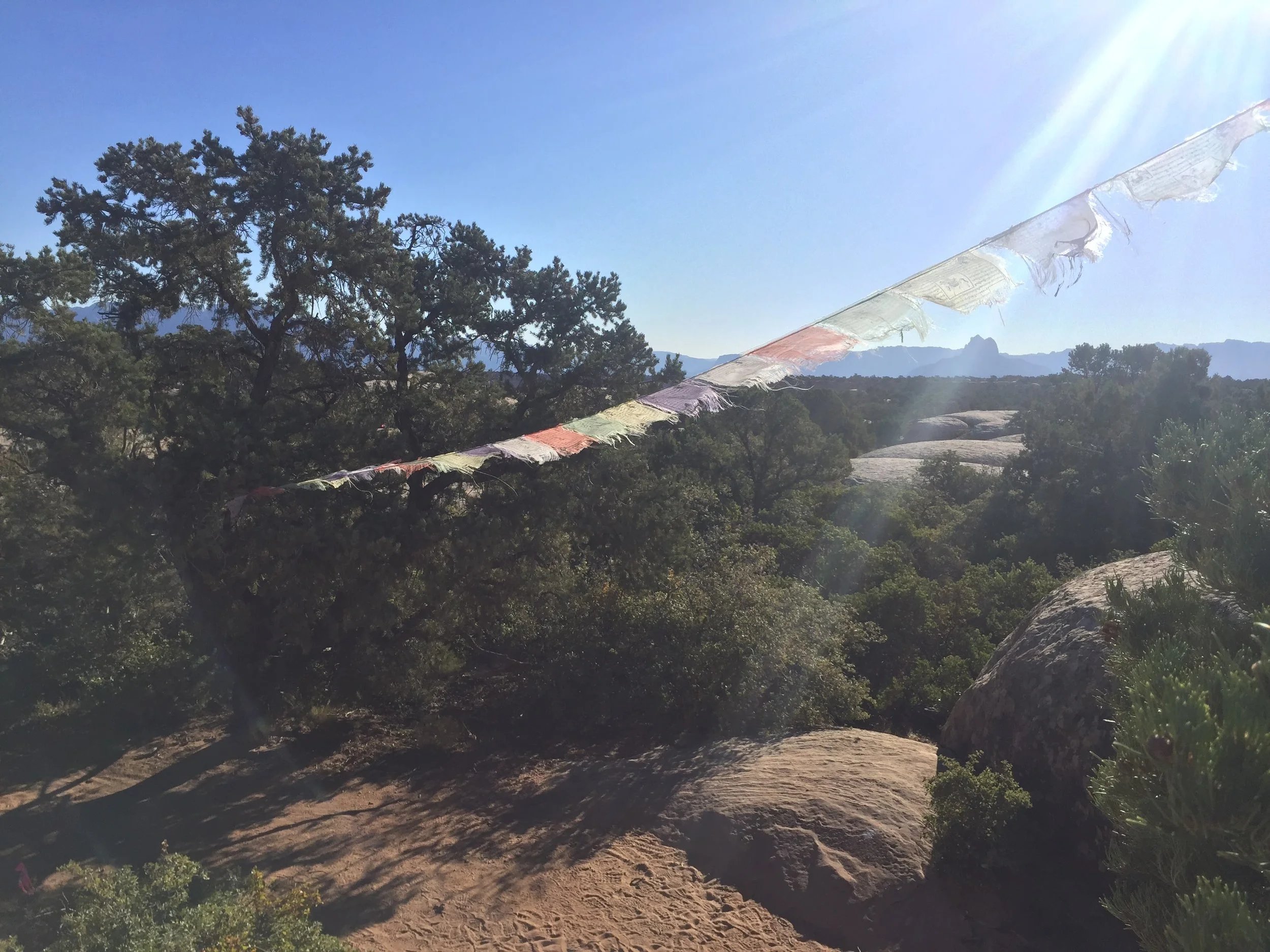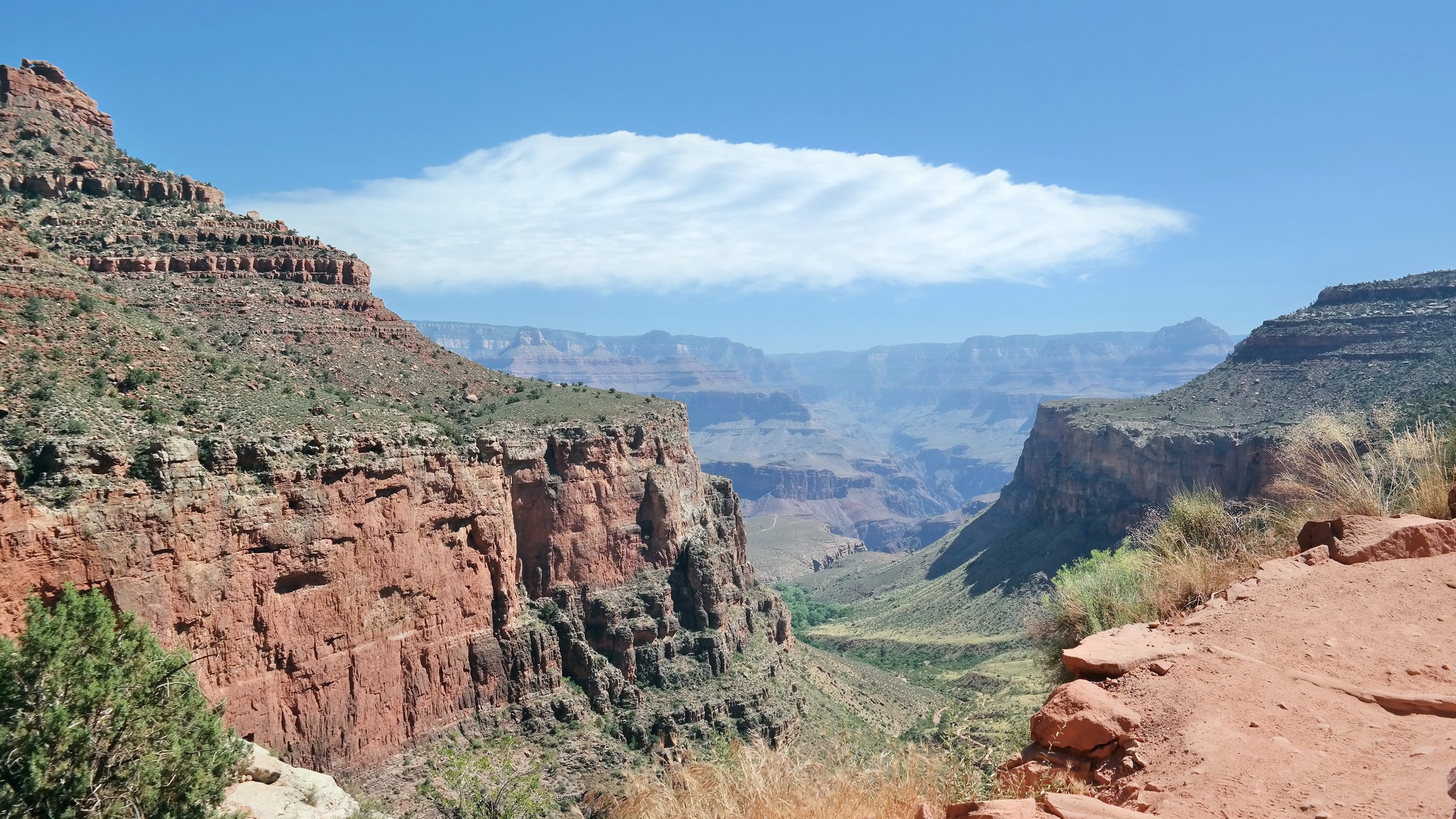My resolution for 2017 was to not only to get outside more but to do more backpacking and camping. As the year wraps up, I'm happy to say that I've met that goal and then some. I started Trial by Trail in March of this year as a way to document my trips and hopefully to help and inspire others to plan their own. I have learned so much this year and I am looking forward to a 2018 full of adventure.
Best Overall: Grand Canyon Rim to Rim
The Grand Canyon Rim to Rim hike is 24 miles with roughly 10k feet of elevation change. We hiked North to South over three days in June, spending two nights at the bottom of the canyon. Temperatures reached 117 degrees Fahrenheit, but we stayed cool by swimming at Ribbon Falls and in Bright Angel Creek.
There is just something about the Grand Canyon. The top of the rims offer amazing views, but the bottom of the canyon is what I found the most astounding. The absolute lack of noise from cars and people was something I had never experienced before. As you hike to the bottom of the canyon, it's like walking through time. I have never felt my own impermanence more strongly.
Click here to read more about our Rim to Rim hike and how to plan your own.
Most Unique: The Narrows Top Down
Aptly named, the Narrows is the narrowest part of Zion Canyon and is one of the most popular hikes in Zion National Park. The canyon walls reach over 1,000 feet tall and only 20 to 30 feet wide in some places. The Virgin River runs through the canyon so the hike is mostly through flowing water that generally ranges from ankle to waist deep (and sometimes deeper).
We were unable to obtain an overnight permit for this hike so we did all 16 miles from Chamberlain's Ranch to the Temple of Sinawava in one day. Armed with dry pants, dry bags, canyoneering shoes, and really big walking sticks, we finished the hike in about 9.5 hours.
Click here to learn how to plan your own Narrows hike.
Most Challenging: Grand Circle Trailfest
I took up trail running towards the end of 2016 as a way to train for longer backpacking trips. I've always hated running, having stuck mostly to roads. I've discovered that running on trails is a completely different experience and one that I actually enjoy.
As I continued to add additional miles to my long runs I must have been feeling overconfident because my husband convinced me to sign up for the Grand Circle Trailfest, a three day trail running festival near Bryce, Zion, and Grand Canyon National Parks. We only signed up for the first two days, but both days were farther than I had ever run in my life with a lot of elevation gain (Day 1 was 14 miles with 4k elevation gain, day 2 was 12 miles with 2k feet of elevation gain).
I surprised myself. It was hard, the first day especially, but I did it. It was inspiring and humbling to see people of all ages on the trail. At one point I paced off a lady who looked like she was about 80 and any sense of grandeur I had disappeared immediately. The trails were magnificent and despite my legs being extremely tired, I found myself regretting not signing up for the third day.
Best Camping: Pedernales Falls State Park
My husband and I visited several State Parks this year that we had either never been to at all or had never camped at: Pedernales Falls State Park, Garner State Park, Colorado Bend State Park, Virgin Creek State Park, and Enchanted Rock State Natural Area.
- Pedernales Falls State Park: So far, Pedernales Falls is my favorite camping spot for it's proximity to Austin, private camp sites, and network of hiking trails.
- Colorado Bend State Park: We definitely need a second visit to Colorado Bend State Park as we left a few trails un-hiked on our visit. It's second on my list because the drive-in campsites offer no privacy from other campers (walk-in campsites do), but the hiking trails are beautiful.
- Enchanted Rock State Natural Area: Definitely one of the most unique natural areas in Texas, Enchanted Rock is the closest you'll get to seeing a mountain in South Texas (unless you count Old Baldy in Garner State Park). It's third on my list because the hiking trails are lacking, but if you're into rock climbing I highly suggest checking it out. There are only walk-in campsites so no RVs or roof-top tents allowed.
- Garner State Park: I have to admit this is low on my list because of how crowded the park was. With a two hour wait to check-in on a Friday evening, we likely won't return to this park to camp.
- Village Creek State Park: Unfortunately, this park was heavily damaged by Hurricane Harvey and only the RV camping part of the park is open. All trails are closed and the canoe launch was destroyed during the storm.
What's Next?
My husband Taylor and I are turning 30 this summer and we want to celebrate with our biggest trip yet. We're applying for permits to hike the John Muir Trail in late July. The JMT is a roughly 200 mile part of the Pacific Crest Trail, starting in Yosemite Valley and ending at Mt. Whitney. We expect it to take us around 20 days to complete. Fingers crossed we can get permits! Stay tuned to hear more about planning and logistics for this trip.




























